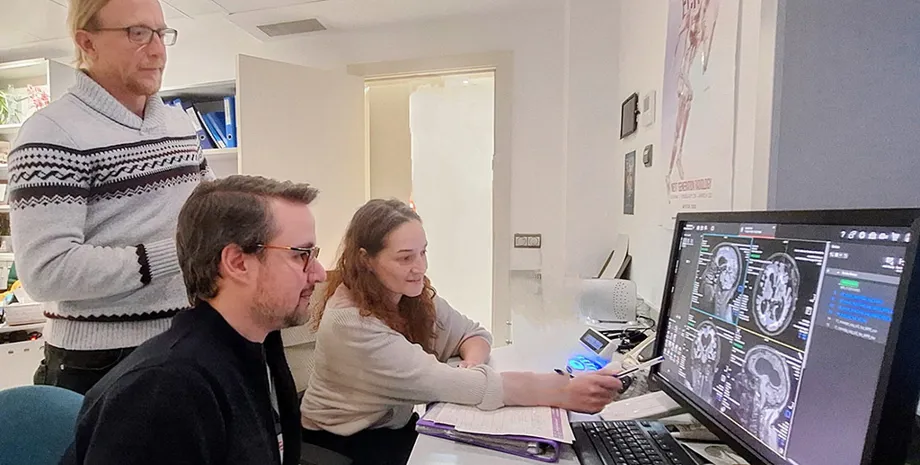Advances in the Diagnosis of Niemann-Pick Disease type C through Brain Imaging
)
A recent study by an international team of researchers, including scientists from the Center for Research on Neurological Diseases (CIEN), has led to new advances in the diagnosis and monitoring of Niemann-Pick disease type C (NP-C). This rare disease, which mainly affects the central nervous system, is characterised by the accumulation of lipids in cells due to mutations in the NPC1 or NPC2 genes, leading to a progressive deterioration of cognitive, motor and sensory functions.
The difficulty in early diagnosis of NP-C lies in the variety and subtlety of its initial symptoms, which can be similar to other neurodegenerative diseases. However, the research team has shown that positron emission tomography imaging ([^18F]FDG PET), a technique that measures brain metabolic activity, can be a crucial tool for detecting specific patterns of hypometabolism and brain atrophy in patients with NP-C, long before these changes are evident by magnetic resonance imaging (MRI).
The results obtained in the study show that certain areas of the brain, such as the cerebellum and thalamus, show a significant decrease in metabolic activity in NP-C patients. These metabolic alterations were observed even in early stages of the disease, suggesting that positron emission tomography may be more sensitive than other traditional imaging techniques in identifying early signs of the disease.
In addition, the study delves into the impact of treatment with miglustat, a drug used to slow the progression of NP-C. The researchers found that in those patients treated with miglustat, patterns of brain atrophy and hypometabolism, especially in the cerebellum, were reduced, suggesting that this treatment may have beneficial effects in slowing brain degeneration.
The team of researchers, which includes CIEN scientists Jesús Silva Rodríguez, coordinator of the Neuroimaging Platform and Michel Grothe, head of the platform, has emphasised the importance of improving diagnostic tools for rare diseases such as NP-C, where early detection is crucial to offer better quality of life and treatment to patients.
This finding opens up new possibilities for early diagnosis of the disease, which could transform the way clinicians approach suspected cases of NP-C and other rare neurodegenerative conditions. The combination of advanced imaging techniques and appropriate drug treatment could make a significant difference to the lives of patients facing this devastating disease.
)
)
)